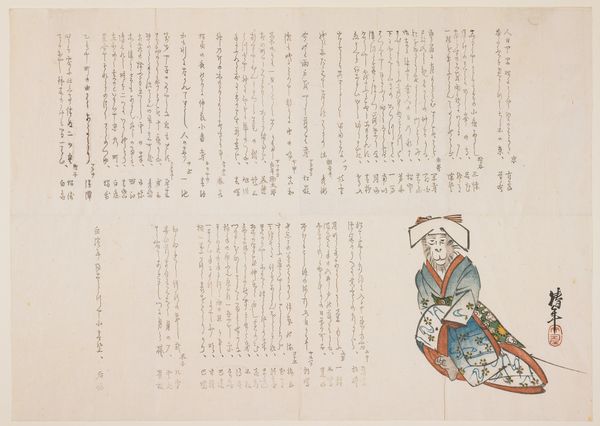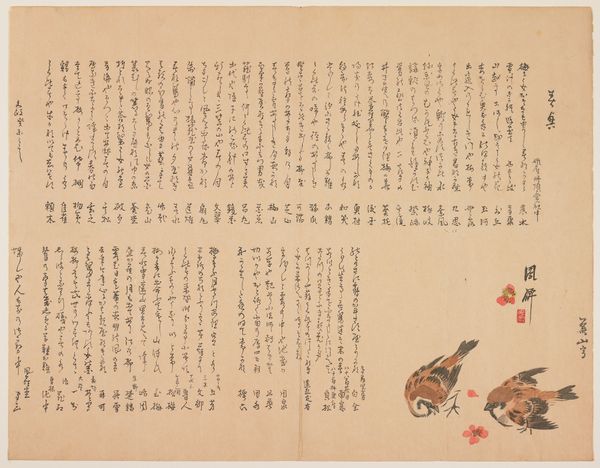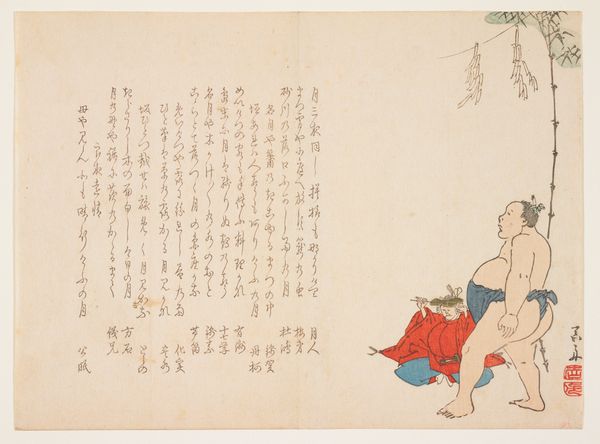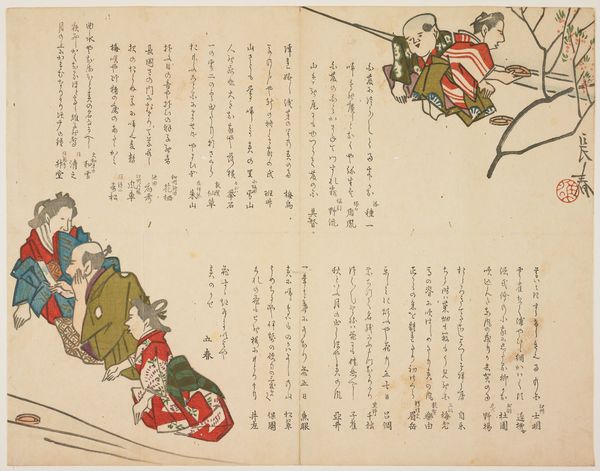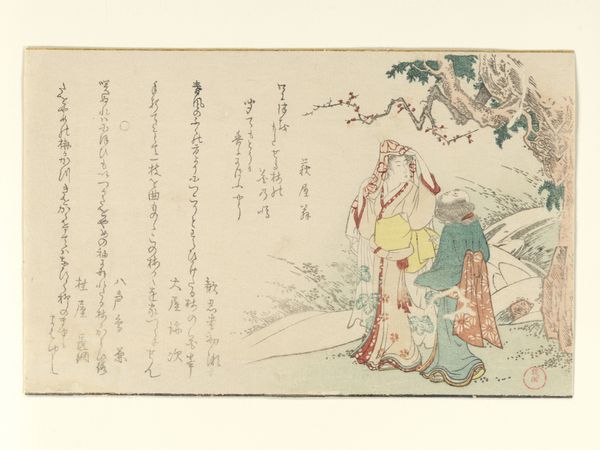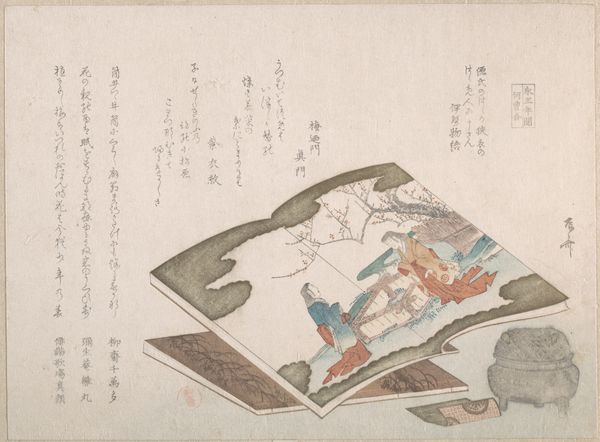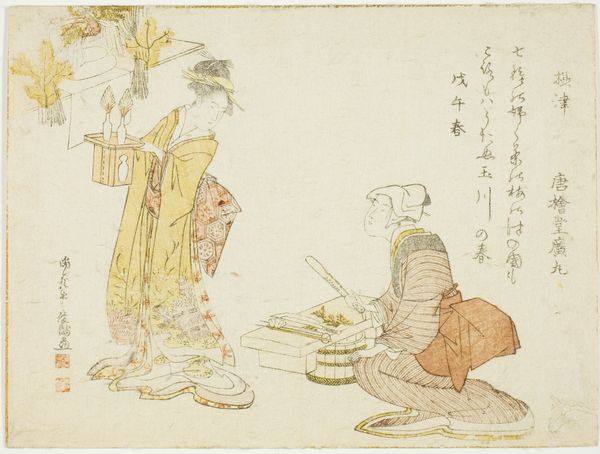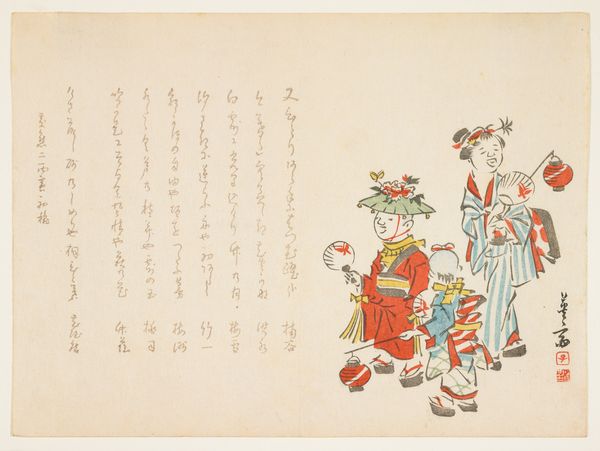
painting, print, watercolor, ink
#
water colours
#
painting
# print
#
asian-art
#
ukiyo-e
#
japan
#
watercolor
#
ink
#
genre-painting
Dimensions: 15 x 19 1/4 in. (38.1 x 48.9 cm) (image, sheet)
Copyright: Public Domain
Editor: Here we have "Children Making a Snow Ball" by Nakajima Raisho, likely created sometime between 1820 and 1859. It looks like it combines watercolor, ink, and possibly woodblock printing techniques. The scene is simple, almost austere, yet it suggests so much about childhood and play. What's your perspective on this piece? Curator: The seeming simplicity is precisely where its power lies. This ukiyo-e print provides a glimpse into the lives of children, but we must remember that children’s depictions also carried ideological weight, reflecting cultural values related to innocence, family and future. Looking at the clothing, are we seeing signifiers of class and social standing subtly embedded within this seemingly innocent scene of play? How does that reading then influence our response to what at first seems to be simple youthful joy? Editor: That’s interesting. I hadn't considered how class might be communicated, even in children’s clothing. How do you feel the presence of text works in this visual and cultural context? Curator: The integration of calligraphy is not just decorative. These are likely poems that contextualize the scene, maybe speaking to seasonal themes, the ephemeral nature of childhood, or even social commentary. Understanding the nuances of the text, and considering who would have been literate and therefore able to ‘fully’ experience this work is another crucial piece. Are we really seeing children represented for themselves or for the gaze of the learned elites of the period? Editor: That’s fascinating. I never thought about it that way – that the picture has many cultural and historical layers. Thanks so much for your insight. Curator: It highlights the importance of intersectional interpretations, ensuring we consider multiple axes of identity and power. Considering historical art through those contemporary lenses allows for richer understandings.
Comments
minneapolisinstituteofart about 2 years ago
⋮
Children's delight in newly fallen snow is universal. Here three ambitious Japanese boys are creating a yukidaruma, "snow Bodhidharma." Bodhidharma was the Indian sage who traveled to China in the sixth century to spread his doctrine which stressed seated meditation as a means toward enlightenment. Since a large rounded snow mound resembles a seated monk with his robe covering his head and legs, such figures came to be called yukidaruma in Japan.
Join the conversation
Join millions of artists and users on Artera today and experience the ultimate creative platform.



